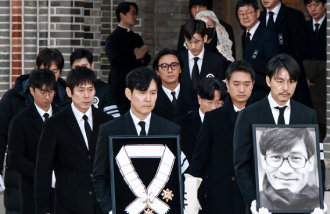UNESCO Official Calls Jikji One of the Greatest Innovations of the Millennium
UNESCO Official Calls Jikji One of the Greatest Innovations of the Millennium
Posted September. 09, 2005 07:43,
"In the history of mankind, the birth of Jikji simche yojeol (Jikji) was a revolution. It is the symbol of typography. Koreans should well preserve the precious heritage of mankind and promote it to the world," said Abdelaziz Abid (58) who is in charge of the UNESCO`s Memory of the World program. He visited Korea to award the first UNESCO/Jikji Memory of the World Prize in the city of Cheongju on September 2. The prize, which named after the world`s oldest movable metal print, recognizes those who make significant contributions to the preservation, documentation and accessibility of heritage
He sung the praises of Jikji, saying that Jikji lies at the very core in the three important stages of typography: writing, printing, and the Internet.
Hand-written copies allowed only a very few privileged people an access to books, but Jikji changed everything, he said. "Jikji is one of the greatest technological innovations of the last millennium."
His keen interest in Korea`s documentation culture was even more enhanced by the Tripitaka Koreana, over 80,000 blocks of individually inscribed Buddhist scriptures. "Seeing the Tripitaka Koreana was the most impressive and wonderful experience in my life," he said. He visited the Haein Temple in South Gyeongsang province on September 4, where the national treasure is preserved.
"When I entered the room, I felt like the books and I became unified as one. The Tripitaka Koreana is as valuable a treasure as Korea`s four documentary heritages, the Daily Records of the Royal Secretariat of the Joseon Dynasty, the Korean script, the True Record of the Joseon Dynasty, and Jikji."
However, he also warned that the precious cultural artifacts could be lost forever if the worn-out documentation was not digitized soon.
Jang Ki-woo straw825@donga.com




![반찬통 착색 고민 끝…‘두부용기’ 버리지 말고 이렇게 쓰세요 [알쓸톡]](https://dimg.donga.com/c/138/175/90/1/wps/NEWS/IMAGE/2026/01/09/133126593.3.png)

![“생수병, 버리지 말고 자르자”…주방 밀폐 용기 끝판왕 [알쓸톡]](https://dimg.donga.com/c/138/175/90/1/wps/NEWS/IMAGE/2026/01/06/133101939.3.png)
